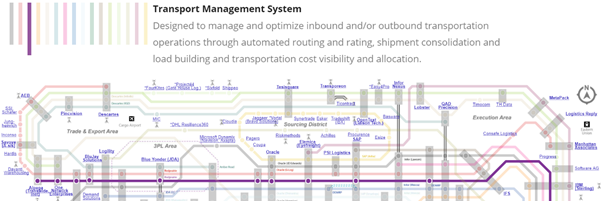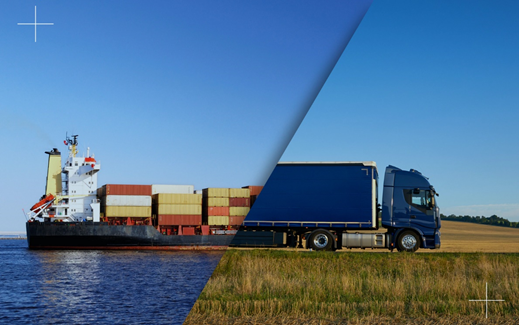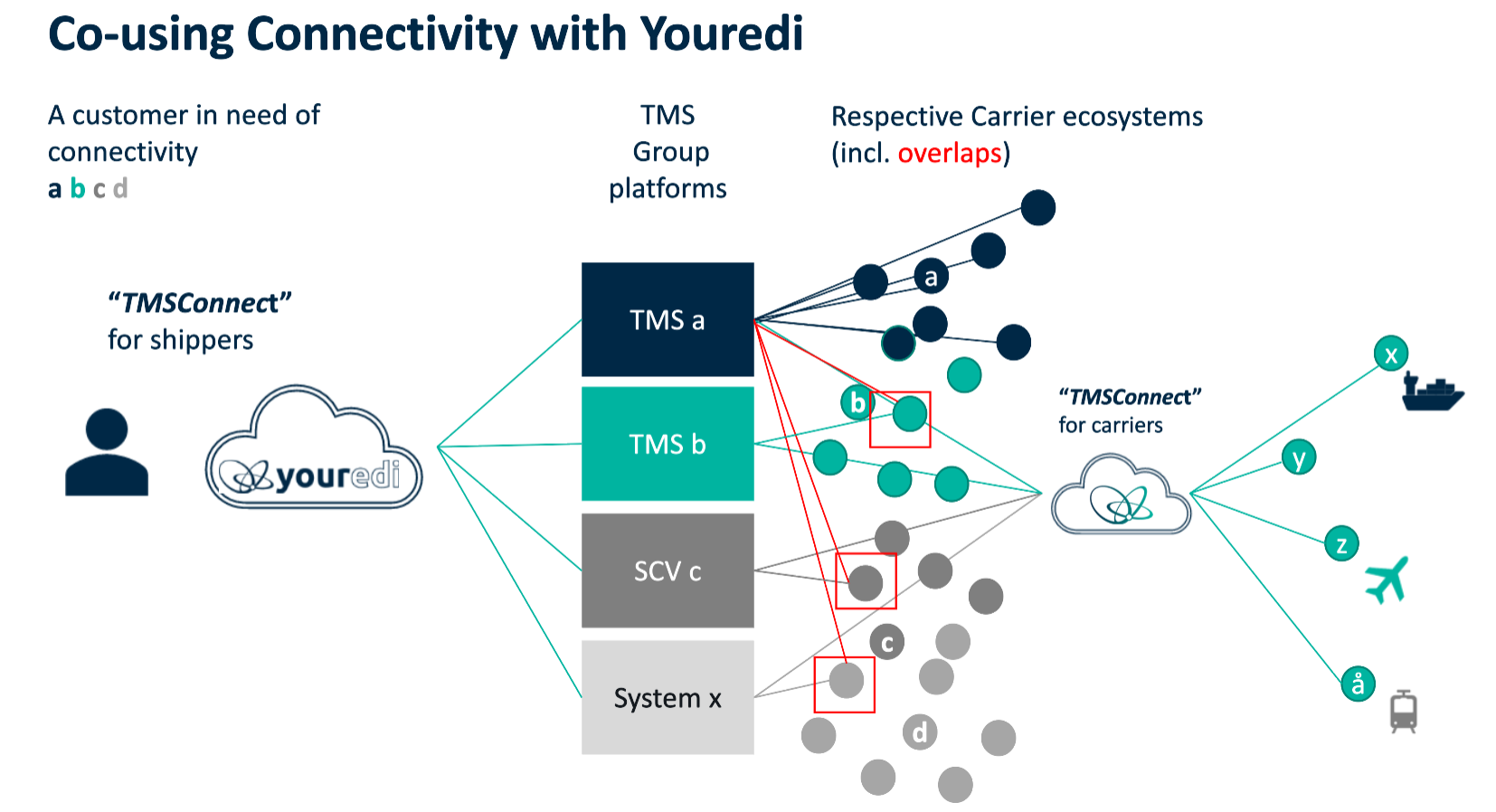In our previous blog post, "What is a transportation management system (TMS), and why do you need it," we explored the topic of TMS software generically. The aim of this post is to deepen the analysis, shed some light on TMS connectivity strategies and discuss the effect of industry consolidation.
What is a TMS?
Defining and explaining the Transportation Management System (TMS) domain, which can be part of the larger Supply Chain Execution (SCE) field, in more detail, is a complex task. There is an abundance of definitions, software product providers, and target audiences. Besides looking at e.g. Gartner's definitions for SCE and TMS, or perhaps categorizing them into on-premise, Cloud or hybrid product buckets, one way to break it down is to look at the target audience. In this case, that means buyers and users of these systems. One can separate them into two groups on a higher level: systems for logistics service buyers and systems for logistics service providers (LSPs, 3PLs,…). For LSPs, the TMS is typically the core system for managing their operations, whereas for logistics service buyers, predominantly larger shippers, it's most likely not that company's primary system. The logistics service buyer typically will have high logistics complexity (and spend) before they invest in an own TMS, whereas the LSP must have some form of a TMS most of the time right from the beginning. However, many TMS software suites target both 3PLs and shippers/logistics service buyers with the same product offering.
However, looking at the TMS segment in isolation is counter-productive, as there are several overlaps between the TMS and other software sectors such as Supply Chain Visibility products.
The various relatives of transportation management systems'
There are multiple software segments with some similarities or partial overlaps with the TMS offering; often, their scope is narrower. These include Supply Chain Visibility platforms, or "Real-Time Transportation Visibility Platforms" as Gartner calls them, focusing on track and trace and other visibility for the transports "under management" and so-called Multicarrier Parcel Management Solutions addressing the execution-focused management of parcel flows, including labelling and parcel LSP order integrations and tracking of parcels. These, again, are mainly targeted at high-volume parcel shippers, such as e-commerce players.
Transport order execution and visibility-focused TMSs might even compete with these specialized solutions. Still, typically they rather serve different purposes and might cooperate and offer combined integrated solutions (e.g. TMS + Multicarrier Parcel Management Solution) to demanding and diversified shippers in a partnership. Numerous software solutions lie somewhere between a TMS and a Multicarrier Parcel Management product or a TMS and a Visibility Platform, making things even more complex.
One attempt at depicting the market of different TMS, Supply Chain execution and Visibility vendors, including their overlaps, is the interactive IT Subway Map.
 Source: SCM IT subway map
Source: SCM IT subway map
Transportation management systems and their LSP (logistics service provider) connectivity
Pre-built integration connectivity to transport services of various modes (ocean, road, parcel, air, rail, intermodal, first or last mile etc.) and various providers is often, but not always, a vital component of a TMS. Data connectivity means integrations from the TMS to other LSPs interfaces or systems (here defined as an existing EDI or API connection). The integrations typically cover the transmission of orders from the TMS to the LSP and flow of transportation status the opposite way. Some TMS providers offer pre-built connectivity as a managed/maintained library of extensions they are proactively building and maintaining, and their product differentiation can be centered on that "connectivity library". Most systems focus on one specific mode of transport, e.g. road OR ocean, whereas others on specific geography, and claim to have all modes of transports covered relevant for their segment, geography or top LSPs.
In Europe (EU-27) alone there are approx. 1.2 million logistics and transport companies, out of which almost 600k companies offer road freight transport services, almost 100k parcel and courier services, 20k water transport, 4k air transport and almost 1k rail transport services, and each has their unique system and interface landscape.
%2c_EU-27%2c_2017.png?width=903&height=292&name=T2b_Sectoral_analysis_of_key_indicators%2c_Transportation_and_storage_(NACE_Section_H)%2c_EU-27%2c_2017.png)
Source: Statista
So, obviously, a TMS cannot integrate and actively manage EDI connections to these LSPs, and in the modern ecosystem-driven economy, it probably should not. That is why most TMSs concentrate on a specific segment and aim for having e.g., all top10 LSPs in a specific segment connect. This could be, for example, Road transport, in a certain geography. Other TMSs have a strategy to simply provide one or a couple of optional standard integration interfaces that the TMS user can offer their chosen set of LSPs to use. It is then up to the LSP to build the connection towards these interfaces' (and TMS systems') requirements and related specifications. Yet, others don't even care whether LSPs are integrated with an EDI/API connection (from the TMS to the LSP's own production system) but provide a graphical user interface where a carrier can retrieve their customers' orders manually or semi-manually (e.g. extracting some file).
Several TMS software providers consider building integrations to LSPs as a core in-house competence they want to invest in. Still, most others focus on core competence somewhere else e.g., the overall capabilities of the TMS in other areas such as Vehicle Load and Route optimization, transport costs and scheme simulation, shipment batching of orders, freight negotiation etc., and having a very intuitive and efficient graphical user interface for achieving this. The trend is using best-of-breed solutions for departmental solutions, such as carrier connectivity. Compare it to hiring; does it make sense to hire the best business manager in France with or without a headhunter who has the contacts, and who keeps their expertise high in his line of business? I would prefer to use the headhunter.
Top companies in this domain use third parties (best of breed-solutions) and focus on adding value to their customers by focusing on core product development, best practices sharing and strong partnerships.
Particularly important to also understand that screen scraping–based solutions will not be the long-term solution if you want your customers to take you seriously as a vendor. Naturally, sometimes, VC investors push to rapid growth results without thinking about quality and customer satisfaction. We've seen these examples in real life often. A well-built foundation is the key to success.
Consolidation of transportation management systems and related system integration strategies
The TMS and the Supply Chain Visibility software industry are especially recently undergoing a major wave of consolidation with many mergers and acquisitions among the different players.
Even though this already took place in 2018, one of the probably most significant M&A events in Supply Chain Execution and Visibility was E2Open's acquisition of the leading multi-carrier platform for the ocean shipping industry INTTRA. Suddenly many TMS and SCE vendors were faced with the fact that a major competitor (E2open is a leading player in the field) owned the platform handling all their ocean shipments, i.e., owning all their data and connectivity. Many were and still are looking for alternatives.
More recently, in early March 2021, Visibility provider Project44 announced the acquisition of Ocean Insights. The acquisition reflects a strategy of expansion of connectivity from one mode of transport (road) to add another (ocean).
 Source: Project 44, 2021
Source: Project 44, 2021
Frequently, acquisitions in TMS and related segments are focused on geographical expansion. A good example of that is the Alpega Group, which results from several mergers and acquisitions of different markets' leading players from the TMS and freight exchange field. Companies such as Alpega have realized that building the LSP connectivity ecosystem in every relevant market is seldomly reasonable as a green-field investment.
For most other companies, M&A rationale is to simply gain market share, i.e., turnover growth, eliminate competition or gain software development expertise (which is costly and rare in the industry) etc. However, sometimes, there is expected synergy on the product level, i.e., companies acquire others to expand their service portfolio. Unfortunately, it is often only after the legal M&A is completed when they realize the different products' technical integration is more difficult than anticipated.
Merged entities typically want to avoid risky mass migrations of entire customer portfolios from one product to another. On the other hand, they would like to realize M&A rationale and offer the multiplied customer base the benefits of economies of scale and an enhanced product offering with a larger geographic reach, including coverage on the LSP connectivity side. One powerful way to achieve that is to provide an integration layer gaining access to the different platforms. Where shippers and other LSP users and thus TMS' services avoid new graphical user interfaces like the plague, the integration layer solution is powerful. This is because the end-user might not even notice they are using connectivity from various platforms consolidated through m&a over the years.
At Youredi, the leading provider of managed iPaaS integration solutions for the supply chain, we have recently launched a customized offering for the TMS software and related industries solving this puzzle. Youredi's iPaaS for TMS Operators -Integration Platform as a Service (iPaaS) for Transportation Management Systems (TMS).

Recommended materials to read and watch:
- Is Your Transportation Management System (TMS) Outdated?
- 6 Ways a Modern iPaaS Can Enhance Your TMS Business
- On-demand Webinar: Achieving Process Automation with Streamlined Ocean Booking and Real-time Visibility
- On-demand Webinar: Modern iPaaS as a Competitive Advantage for TMS, WMS, and Other LogTech Solution Providers


